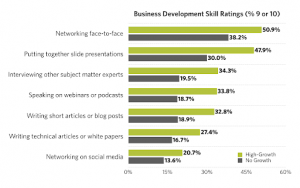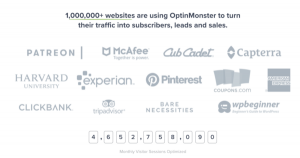How does a customer data platform fit into your marketing technology stack? Columnist Josh Manion discusses the role of the CDP and how it differs from other data platforms.

Just when marketing thought it had sorted out the latest in data management tools, a high-profile industry analyst firm officially recognized another category of solution: the customer data platform (CDP).
In July, Gartner Research analysts introduced the CDP into its “Hype Cycle for Digital Marketing and Advertising, 2016.” And although it’s early in the hype cycle, it’s not too soon to ask how this platform, first coined in 2013 by technologist David Raab, fits into the marketing technology stack.
Marketers, of course, face steep challenges today when it comes to delivering on a more effective customer journey, including the growth in disparate marketing technologies, fragmented data sources, and the tough job of transforming and acting on data. How does the marketer connect the dots between channels and devices to engage customers holistically?
That’s the CDP’s role in a nutshell.
A CDP should enable marketers to collect and own first-party customer data across all touch points; build and own omnichannel profiles and segments; and trigger actions across the marketing technology stack, serving as a force multiplier.
Defining the CDP
According to Gartner’s report:
A customer data platform (CDP) is an integrated customer database managed by marketers that unifies a company’s customer data from marketing, sales and service channels to enable customer modeling and drive customer experience.
Marketers have been struggling for years to unify and leverage data about customers as it’s generated from an ever-expanding number of interaction points, including websites, mobile apps, social media, email, digital advertising, Internet of Things (IoT) devices and so much more.
According to Gartner:
The customer data platform addresses an acute need for modern marketers, who, tasked with revenue accountability and customer experience, are ever in search of that elusive complete view of the customer, beyond the acquisition stage … A bridge between the traditional marketing database or post-sales CRM system and multichannel campaign management execution engines, the customer data platform arose from the need for a solution that could be controlled and deployed by marketers to unify customer identity in a privacy-compliant way, manage first-party data and connect execution across multiple point solutions.
Raab says he agrees with Gartner’s definition and is pleased to see the analyst firm introduce the term into its hype cycle.
“It’s an important concept and represents one of the few fundamental changes in marketing technology in the past decade, because it shifts control of the customer database from IT to the marketers,” Raab told us in an interview. “That’s hugely important because IT could never keep up with marketing’s needs, while marketing at least has a chance of keeping up with itself.”
Demystifying data platforms
So how does a CDP differ from other data platforms, such as a tag management system or a traditional ad-focused data management platform (DMP)? Two of them are tightly linked, while another is similar, but with distinct differences:
• Tag Management Systems (TMS) — Tag management systems were introduced to eliminate the bottleneck between marketing and IT over the deployment of “tags,” i.e., snippets of data-collecting code that most digital marketing vendors require their customers to embed in web and mobile channels.
But tags have always been about the data — first-party data, to be exact (the data you own about your customers) — not just the tags. This is one of the key reasons that tag management systems are now tightly integrated with CDPs, which rely on first-party data and profiles to drive action.
Other factors include enterprise tag management’s native deep integration with the larger digital ecosystem and the ability to standardize and unify disparate data at a foundational level via something called the “data layer.”
Enterprise tag management systems also boast granular controls for improved data governance, privacy and security. All of these capabilities are key to harnessing the power of the CDP at the next level.
• Customer Data Platform (CDP) — The CDP is a marketer-controlled system that builds on the capabilities of an enterprise TMS platform in profound ways, including being able to create and own a single source of first-party data and profiles that can be activated across your existing marketing technology stack in real time to fuel action and insight.
A CDP should also be able to collect data about offsite customer interactions — such as digital advertising, online video, mobile apps and Internet of Things (IoT) devices — as first-party data (the data you own about your customers). This data can be used to drive first-visit personalization, fuel insight and improve ad effectiveness.
Finally, a CDP needs to be able to onboard offline data from CRM and point of sale (POS) systems to create a robust profile. In the end, the CDP should be a true force multiplier for all of your marketing technologies.
• Data Management Platform (DMP) — The line between DMPs and the evolved tag management system — essentially the CDP — has become increasingly blurred and confusing. It shouldn’t be. The DMP was introduced as a way to leverage data in buying ads to acquire new customers.
DMPs mostly use third-party data (information that is acquired from outside parties) to help advertisers buy segments based on demographics, interests and other audience attributes. The CDP, on the other hand, specializes in collecting, owning and leveraging first-party data (brand-owned) across marketing technologies.
Whereas DMPs are primarily focused on ad tech use cases and acquisition (top of the funnel), the CDP is focused on martech use cases, with a sharp focus on driving conversion and customer loyalty engagement (activities in the middle of the marketing funnel). A CDP, in fact, can help power and accelerate DMP initiatives.
Gartner gets it right by adding the CDP to its hype cycle. (Note: I’m the CEO of Ensighten, a provider of customer data platforms for brands.) With this foundational platform, marketing can now assume responsibility and control of customer data, gaining the power to orchestrate that intelligence for more profitable and satisfying customer experiences.
Some opinions expressed in this article may be those of a guest author and not necessarily Marketing Land. Staff authors are listed here.
Marketing Land – Internet Marketing News, Strategies & Tips
(106)
Report Post










